It all began one afternoon in April 2019, when I had an unexpected panic attack shortly after dinner. It was completely out of the ordinary for me, making the experience all the more alarming. I was home alone and had just enjoyed a delicious vegan meal—nothing in it was new or unusual for me.
This is a long read, as I’ll be sharing my 1.5-year journey navigating histamine intolerance. But don’t worry, there’s a happy ending.
Over time, I’ve been asked countless times about my experience with histamine intolerance, but for a while, I wasn’t ready to talk about it. Even thinking about it felt overwhelming and, quite frankly, triggering. It’s also a complex and confusing topic, where no two people seem to agree on the same things. I didn’t want to add to that confusion. Instead, my goal is to share my story in a way that empowers you, not frightens you.
If you’re curious about how I managed it, read on. Just remember, everyone’s experience with histamine intolerance is different. I hope that by sharing mine, I can help ease some of the fear and confusion that often comes with those unexpected, unsettling symptoms.
***
A Little Bit of Context
The panic attack episode and sudden food reactions episode happened while I lived a healthy lifestyle. I was being lectin-light, gluten-free, sugar-free. You know, all the good stuff. In fact, in the days before this episode, I felt on top of the world. I had a lot of energy, and I felt inspired, creative and productive. But, with hindsight, I now know there was a lot of cortisol involved, and it was more like being overstimulated. I did experience some weird symptoms like tingling in my body and pins and needles sensations on my skin. But I was putting all on stress and overworking.
A Scary Episode: the Trigger?
Looking back, I now believe there’s more to the story of that panic attack. A few months earlier, I had a terrifying experience while driving from San Antonio to Dallas in the middle of a rainstorm. The weather was so bad that for a few seconds, I couldn’t see anything in front of me or around me on the highway. In that moment, I felt an overwhelming sense of impending doom, and my body instantly went into fight-or-flight mode. I was shaking uncontrollably, and I couldn’t manage my hands or feet. By some miracle—and with my husband’s calm guidance from the passenger seat—I was able to pull over safely. It took me several minutes to regain control, and once my husband took over the driving, I felt stable again by the time we arrived home in Dallas.
I distinctly remember thinking afterward: That experience must have triggered something in my brain. Although this could be a separate topic to explore, I believe that event reactivated certain fear pathways in my brain.
While I don’t believe food is the root cause of histamine intolerance—especially since I’ve always maintained a clean diet—I do want to point out that my diet was quite rich in high-histamine foods at the time: avocados, spinach, fermented foods, leftover animal protein, canned fish, seafood. Although these foods are typically part of a healthy diet, there can be too much of a good thing. We sometimes forget to balance them with foods that have anti-histamine properties. Over time, I reintroduced most of these foods into my diet in moderation, but I no longer eat leftover animal protein (I will occasionally extend the limit to 24 hours).
The Thread: Confusion and Fear
I don’t believe the panic attack was directly caused by what I ate. Rather, it was my body’s reaction to experiencing strange, unsettling symptoms for the first time in my life—like the sensation of my throat closing and my ears blocking while eating. That episode set off a cascade of sleepless nights, often accompanied by a racing heart that seemed to come out of nowhere. You can imagine how terrifying and confusing it was, especially since I was doing everything “right.”
I was scared and completely in the dark, unsure of what was happening to me. My initial thought was that it might be due to seasonal allergies, even though I’d never really had significant issues with them before. As I started researching seasonal allergies, I stumbled across information about histamines.
All the Information Online Added to the Stress
The more I researched online, the worse I felt. The articles were terrifying. They suggested I wouldn’t be able to leave the house for months out of the year, that I’d need steroids, injections, and antihistamines, and that I’d have to wash my hair and clothes immediately after coming home. These were routines I couldn’t even imagine becoming part of my daily life.
All this information only added to my stress, making me even more fearful of going outside. Do you see the thread? Fear was taking over, amplifying everything, and wreaking havoc on my nervous system.
After yet another panic attack—this time after eating a mix of roasted nuts I had made myself, something that had never bothered me before—we ended up at the emergency room. I was hyperventilating, convinced that it must be pollen or something in the air. Once again, I was overwhelmed by fear.
The doctor ran some basic tests, which all came back normal. She told me it was probably stress and anxiety, prescribing anti-anxiety medication—something I had never needed in my life. I got the prescription filled but never took a single pill. Under pressure from my family, I tried antihistamines one day, but they had no effect. And all the while, I was still desperately searching for answers.
What are Histamines, Anyway?
Histamine is a chemical substance released in inflammatory and allergic responses, as well as regulating physiological functions in the gut and acting as a neurotransmitter for the brain, spinal cord, and uterus. White blood cells, called basophils, and mast cells, produce histamine as part of an immune response to foreign pathogens. (WIKIPEDIA)
According to Dr. Becky Campbell:
“While histamine is naturally found in certain foods, it is also a compound that is found in the cells of the body. Histamine is a very important part of the immune system and also plays a role in inflammation in the body. We also need histamine in order to digest food, move our bowels, boost exercise performance, increase attention, and get blood as well as nutrients and oxygen delivered to different parts of the body. With the right amount of histamine, the body is able to perform these functions as it should.
However, the problem occurs when there is too much histamine. When your histamine levels increase, your tolerance decreases. At this point, histamine can cause a wide variety of symptoms, and these symptoms can vary depending on where it is released in the body.”
Dr. Becky Campbell
My First Aid Kit
I like to remind myself that histamines play an essential role in the body, but too much of them can create problems. I can’t recall exactly how I first discovered the link between my symptoms and histamines, but after being prescribed anti-anxiety medication and learning that anxiety can be a symptom of histamine intolerance, I decided to try Ali Miller RD’s anti-anxiety bundle. I had already been following her on Instagram and was familiar with her book The Anti-Anxiety Diet.
In hindsight, that decision turned out to be one of the best I made during this journey. Somehow, I felt guided to what I truly needed. The Relax and Regulate powder, which contains magnesium bis-glycinate and inositol, helped me relax and sleep better in the evenings. This was a game-changer because I later learned that histamine issues tend to worsen at night, with insomnia being a common symptom.
Insomnia was something completely new for me, as I had always been a good sleeper. The Calm and Clear supplement, also part of the bundle, contains a mix of B vitamins and adaptogens, which turned out to be exactly what I needed. My doctor even ended up prescribing additional adaptogens later on. I didn’t take much of the Gaba Calm, the third supplement in the bundle, since it’s produced through fermentation, and at that point, I had started eliminating anything fermented, including probiotics.
(Just a note: I’m not affiliated with these products in any way, I’m simply sharing what worked for me.)
Fasting, Traveling, and Lowering Stress
At one point, I became so fearful of having reactions to food that I was barely eating at all. I thought that by limiting my intake, my body might have a chance to reset and reduce inflammation. So, I decided to try intermittent fasting, eating just one meal a day.
When it was time for our vacation to San Diego—a trip we had booked well in advance—I was filled with dread. The idea of navigating the airport and flying, something I had done countless times before, now terrified me. This was coming from someone who had spent her adult life traveling and had lived on four different continents. Travel had always been a source of joy, but everything I read online about histamine intolerance and travel had me overwhelmed with fear.
I was also anxious about maintaining my clean, low-histamine diet while staying in a hotel. However, the excitement of visiting San Diego and being near the ocean outweighed my fears. I have such fond memories of that trip, and the only real challenge I faced was the sleepless nights.
Being by the ocean, in a place I loved, had exactly the effect I was hoping for. It grounded me and significantly lowered my stress levels—an important milestone in my healing journey.
A Funny Side Note
When I first started experiencing symptoms of histamine intolerance, I found comfort in an unexpected place—watching Grace and Frankie. I loved the show, and it just so happened to be set in San Diego. In those early days, when I was alone at home, I managed to ease my anxiety and even put myself to sleep by watching episodes on my phone. I know it’s counterintuitive (especially since I normally avoid technology in the bedroom), but something about that show made me laugh and helped me relax enough to fall asleep.
In a way, Grace and Frankie provided the same kind of soothing escape that San Diego itself did on our trip.
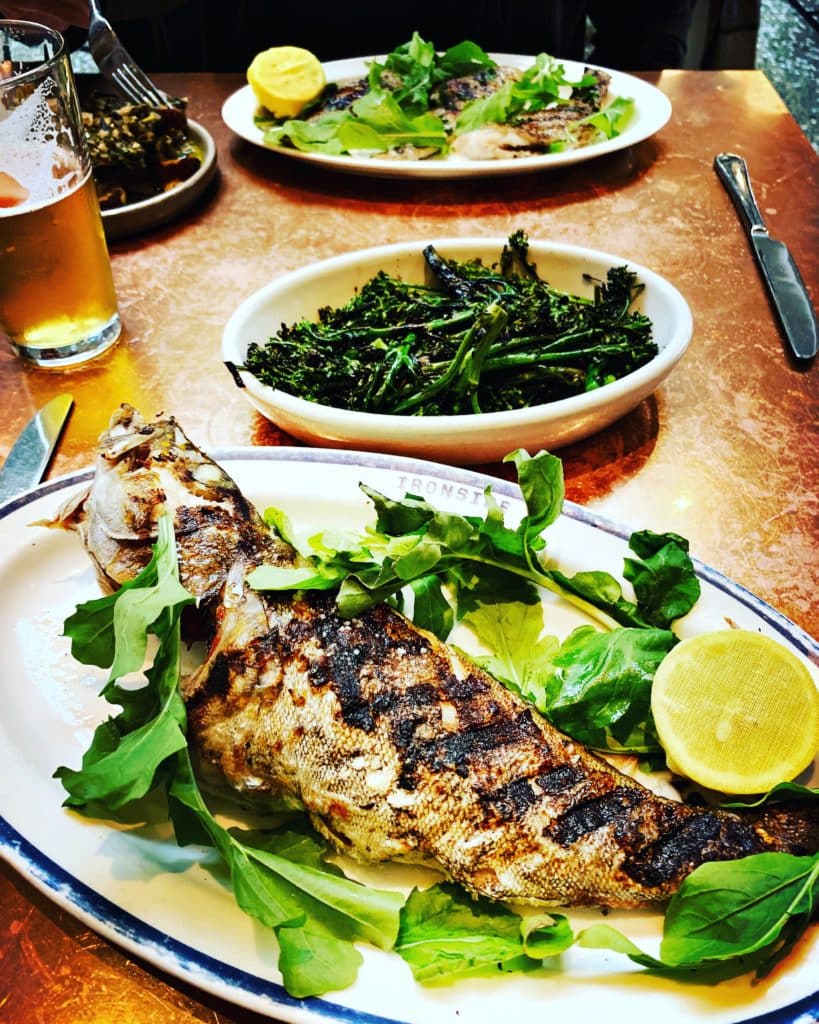
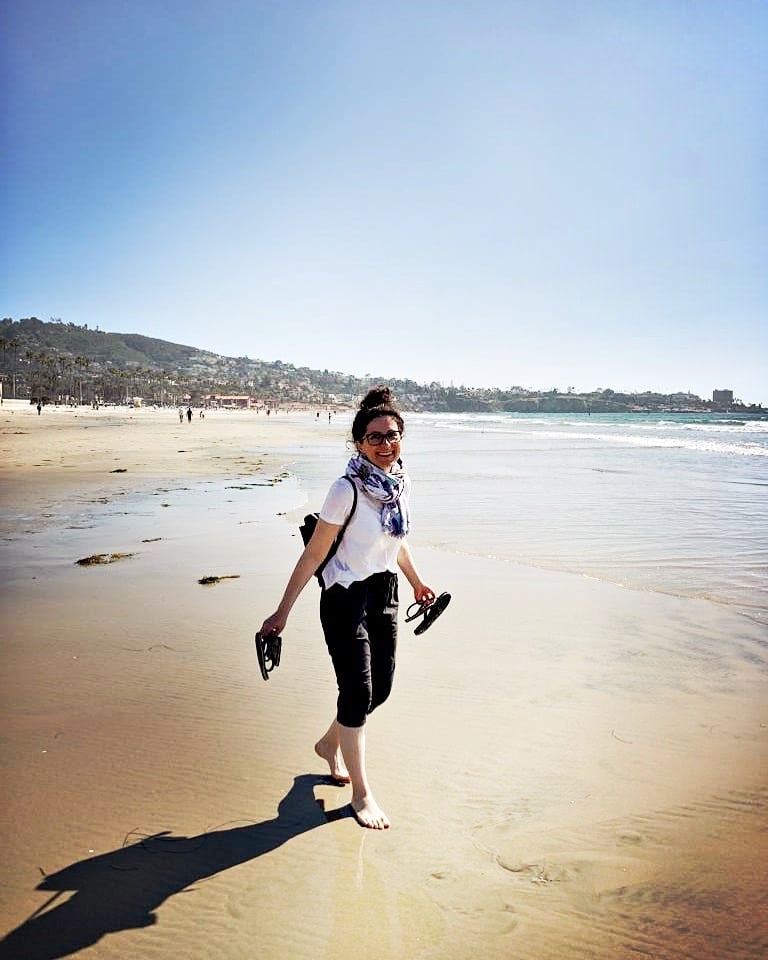
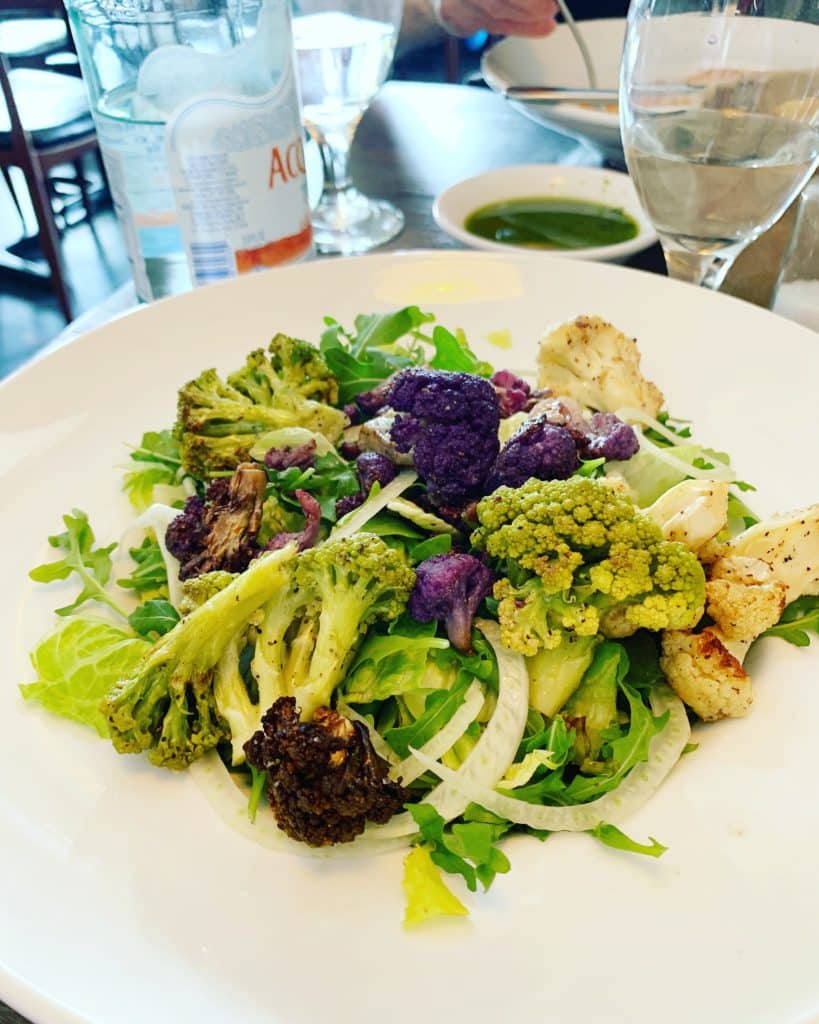
Unexpected (and Positive) Side Effects
A small side note: When I adopted the Plant Paradox lifestyle and began following a lectin-free diet in August 2017 (at 37), one of the most surprising benefits was the resolution of most of my PMS symptoms. For the first time in my life, I experienced periods with minimal discomfort. Before the Plant Paradox, my pain level during periods was a debilitating 10; afterward, it dropped to a manageable 2. While I still felt a bit off during my cycle, it no longer interfered with my daily life or required medication.
To my amazement, after starting the low-histamine diet, the first period I had came with zero symptoms—something I had never experienced before. It was a completely pain-free cycle for the first time in my life.
I believe these positive changes in my health are largely due to the low-histamine diet and possibly eliminating dairy (although years later, I can eat dairy again).
Not Everything You Read Online Will Help You (Including This Post)
As I continued reading about histamine intolerance online, I came across all sorts of alarming warnings: people with “histamine intolerance” supposedly don’t handle air travel, crowds, noise, heat, cold, pollen, or even exercise well. This information started to make me fear traveling, something that had always been a central part of my life.
The reason I bring this up is because so much of what you find online is incredibly scary, and it can fuel the fear and stress you’re already feeling. That’s exactly what happened to me.
Even though I found myself becoming fearful of things that, just weeks earlier, I had considered completely normal, I also understood how my nervous system works. I made a conscious effort to stay connected to who I truly was, reminding myself that I wasn’t defined by “histamine intolerance.” It was something I was experiencing, not something that defined me.
Instead of getting lost in the fear, I shifted my mindset. I chose to be grateful for the signals my body was sending me and curious about what they were trying to tell me.
I Was Never ‘Histamine Intolerant’
If you search for low-histamine foods online, you’ll find plenty of lists—but none of them match. There are a few reasons for this. First, no two people experience histamine intolerance in exactly the same way. Second, there’s little solid research on the topic, and measuring histamine levels in foods, especially plants, is incredibly challenging. And third, many bloggers create their own lists without emphasizing that histamine intolerance is highly individual.
I disagree with the idea that histamine intolerance is an illness, which is why I chose not to label myself that way. I never called myself “histamine intolerant.” Interestingly, my functional medicine doctor never gave me that label, either. While we discussed histamine intolerance and its potential root causes, we focused on addressing those causes and resolving the symptoms. At no point did he say, “You are histamine intolerant,” and that was empowering for me. It helped me avoid identifying with my symptoms, which I believe played a role in my recovery.
The tests my doctor ordered revealed some imbalances, toxicities, and signs of gut dysbiosis. From there, we began working on addressing those underlying issues.
If You Have to Leave this Page with Only One Lesson, This Is It
Work with a functional medicine practitioner. The symptoms you’re experiencing are your body’s way of signaling that something deeper is going on, and it’s struggling. Your body needs support.
Only through comprehensive blood tests and partnering with a doctor who understands these complexities can you uncover the root cause. A functional medicine practitioner will also consider the emotional and psychological aspects of your health. If they don’t, it’s essential that you explore those areas on your own, as they are a crucial part of the healing process.
In my case, the tests revealed that I needed help detoxifying, particularly from heavy metals, so we worked on that gradually. Once my body received some foundational support, we moved on to a one-month liver detox using Quicksilver Scientific’s BlackBox II (as your doctor about this).
Managing my stress levels was also key to my recovery. For that, I used an infrared sauna, exercised regularly, meditated, and spent time in self-reflection. Remember how I became fearful of going outside, thinking the air was triggering my symptoms? I worked hard to overcome that fear and reconnect with my true self. I’ve always loved nature, and being outdoors has always been healing for me. Nature is my healer. Overcoming that fear was a significant victory, and it’s something I’m very proud of.

Finding Reliable Sources of Information
Fortunately, there are a few trustworthy sources out there. In addition to the valuable guidance from my doctor, these were the main resources that helped me along the way:
Histamine Overload Symptoms
Even long after my initial histamine intolerance episode, I continued to experience unsettling symptoms. My ears often felt blocked, my throat would tighten, and I had difficulty swallowing—even when eating low-histamine foods. This reinforced the idea that histamine intolerance isn’t black and white when it comes to food lists.
Other symptoms included difficulty breathing, a racing heart, persistent throat clearing, and the feeling that many foods were mucus-producing. I also dealt with occasional acid reflux, irregular heartbeats, sleepless nights (particularly around ovulation and my period), and a lingering ear infection, along with sinus congestion and a runny nose. Oddly enough, I developed an itch on the side of my right foot.
Although I didn’t experience common symptoms like migraines or hives, I remained sensitive to strong smells (like perfumes and gas), which I now recognize as a sign of histamine intolerance. Interestingly, I also discovered that scrolling through social media triggered symptoms, and there are emerging reports suggesting that EMFs could contribute to histamine release—so I reduced my screen time and focused on more meaningful activities.
Remember, symptoms vary greatly from person to person, so it’s important to stay mindful of your own body’s signals.
How to Clear Histamine From Your Body: Supplements
Supporting your body’s ability to manage histamine overload is essential. Below are the key supplements that worked for me, based on expert advice and personal experience:
Histamine Breakdown Support
- Seeking Health’s Histamine Digest: A patented enzyme derived from porcine (pork) kidney extract that supports the healthy breakdown of histamine in areas such as the small intestine, colon, placenta, kidney, and more. Use discount code CLAUDIA10 for 10% OFF (affiliate link).
- Quicksilver Scientific Nanoemulsified HistaAid: A fast-acting blend of flavonoids designed to help maintain healthy histamine levels. This supplement was particularly effective for me when others failed to work.
Other Key Supplements
- Probiotics: Probiota HistaminX from Seeking Health is formulated with histamine-degrading bacterial strains. While probiotics were initially problematic for me, I was able to tolerate them later on. Use discount code CLAUDIA10 for 10% OFF (affiliate link).
- Magnesium and Vitamin D: Essential nutrients for overall health and supporting the body’s natural processes.
- B-Complex Vitamins: Helps with detoxification and nervous system function.
- Liposomal Glutathione: An important supplement for detoxifying the body.
- Quercetin: While many forms of quercetin triggered symptoms for me, HistaAid from Quicksilver Scientific was the only one I could tolerate.
- Rosemarinic Acid – recommended by Dr. Steven Gundry as a powerful anti-histaminic
Gut Healing Support
- Biocidin: A natural antibiotic that supports gut health by addressing bacterial and viral infections, which are often linked to histamine issues.
- Biocidin LSF: Helped with my ear infections and provided essential gut healing support.
- Important Step: A thorough gut investigation is crucial—check for parasites, fungi, and harmful bacteria that may be contributing to excess histamine production.
Hormone and Histamine Connection
- Many women experience histamine intolerance in their 40s, often linked to perimenopause and hormonal imbalances such as fluctuating estrogen and progesterone.
- Resources:
- Dr. Lara Briden explores the link between hormonal changes, dairy intolerance, and histamine issues in women. I recommend her book, Hormone Repair Manual.
- Dr. Becky Campbell’s book, The 4-Phase Histamine Reset Plan, is a valuable resource for managing histamine overload.
Caution with Supplements
- Some supplements may trigger symptoms, so it’s important to work closely with your doctor to find the right ones for your body.
- Even with my doctor’s guidance, we had to try multiple options to discover what worked best for me.
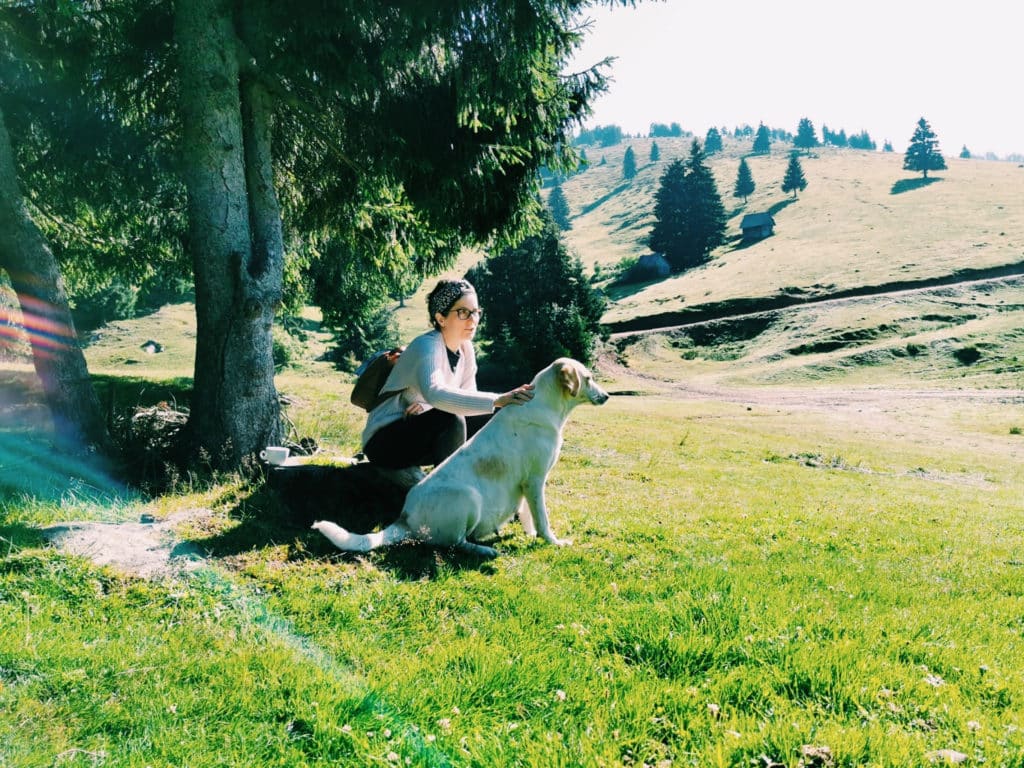
Guide to Low-Histamine Cooking and Food Preparation
When I first began managing histamine intolerance, I had to eliminate many of my favorite foods. It was a challenging process, but I eventually learned how to create delicious, low-histamine meals while staying compliant with my dietary needs.
For a detailed guide on this topic, including food lists and meal preparation tips, I encourage you to read my article Guide to Low Histamine Cooking and Food Preparation.
Regarding histamine food lists, it’s important to remember that no two people will react to the same foods in the same way. My favorite resource on this topic is the Swiss Interest Group Histamine Intolerance (SIGHI) which notes:
“Not all foods are equally intolerable for everyone, depending on the individual causes of histaminosis. We recommend following our compatibility list strictly for the first 4–6 weeks. Then, carefully reintroduce foods to see how they affect your individual sensitivity, preventing unnecessary long-term dietary restrictions.”
SIGHI
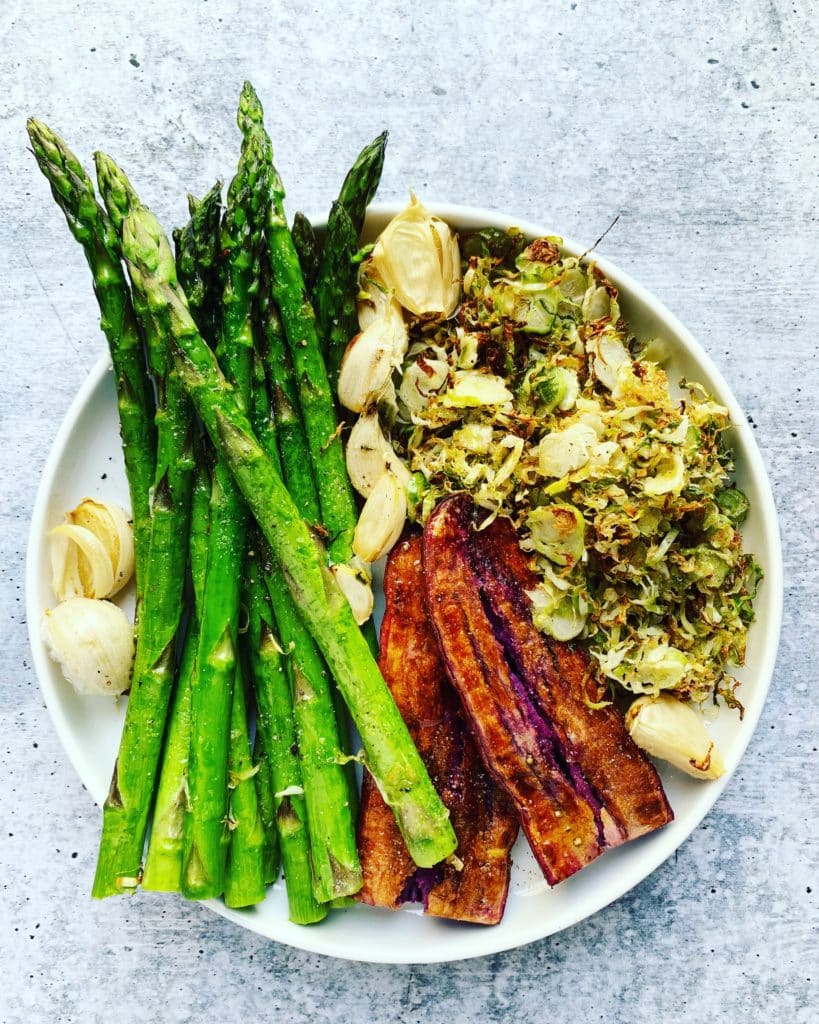
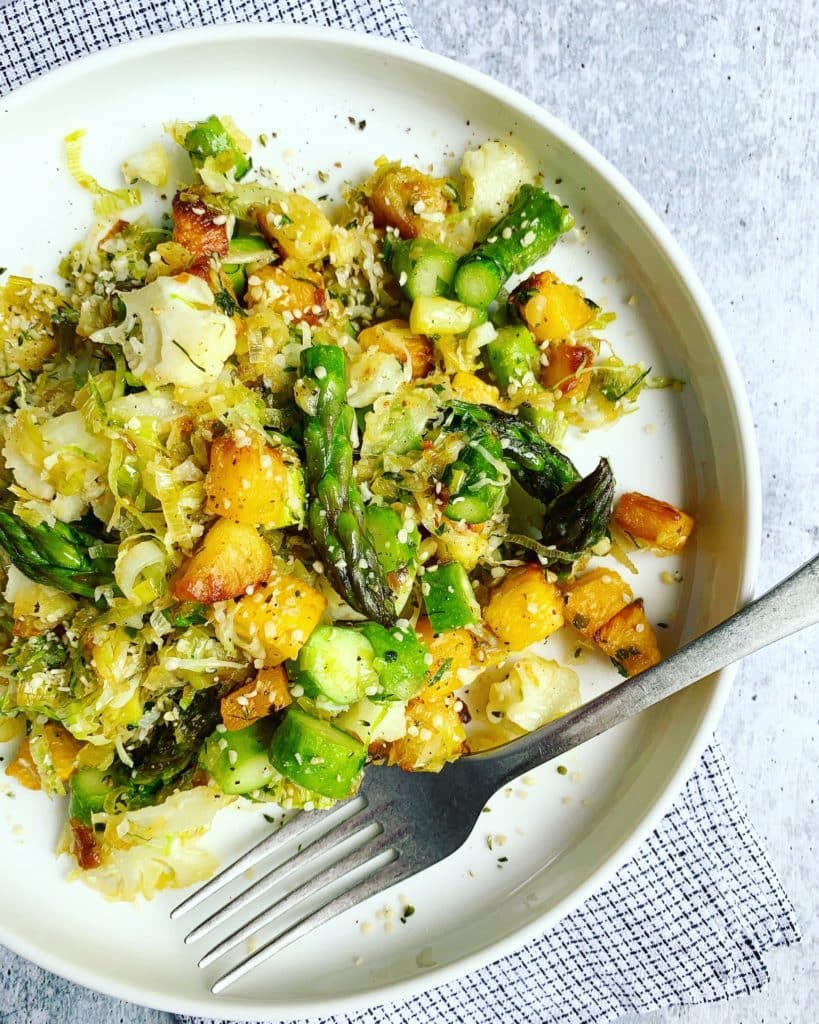
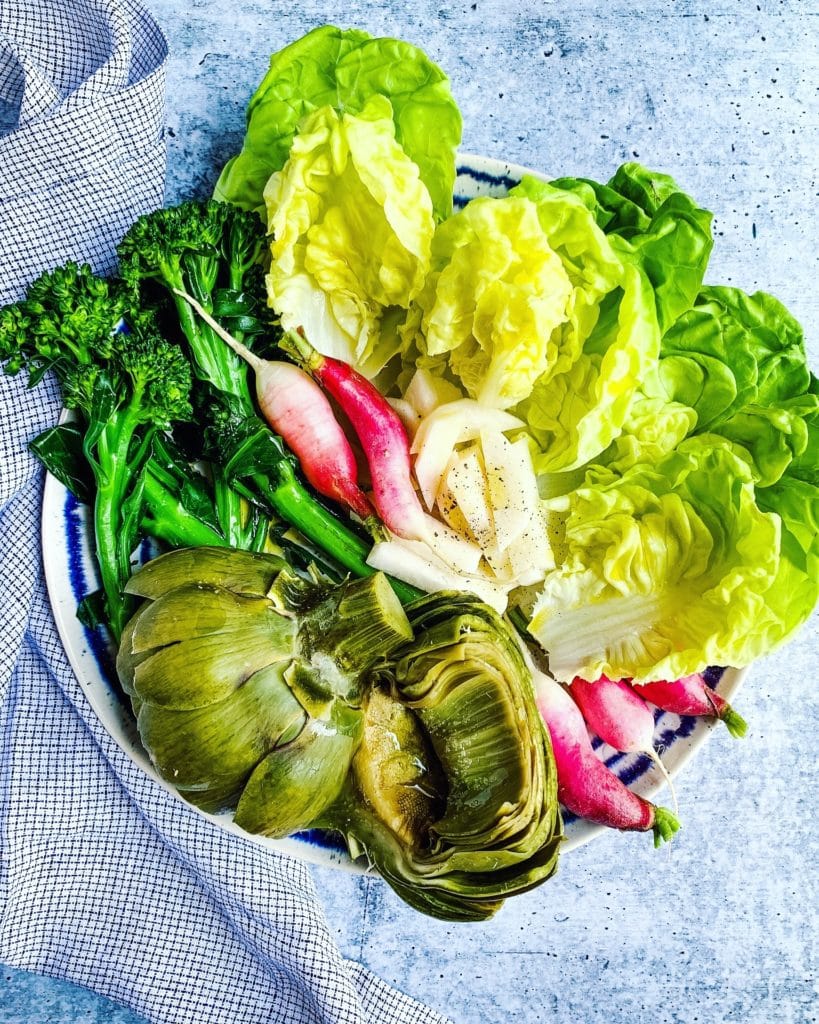
Don’t Obsess Over Food
While diet plays an important role in managing histamine intolerance, it’s just the tip of the iceberg. True recovery comes from building immune resilience, improving vagal tone, and fostering what some call “anti-fragility”—the ability to thrive under stress. My goal is to teach my body to be more resilient, identifying real threats instead of falling into a cycle of ever-increasing food restrictions.
I’ve learned through my training at the Integrative Institute for Nutrition (IIN) that what truly nourishes us goes beyond food: relationships, career, spirituality, and physical activity are just as vital. Diet is a secondary source of energy—so choose foods that support your overall health, but don’t let food become your sole focus (and an additional stressor).
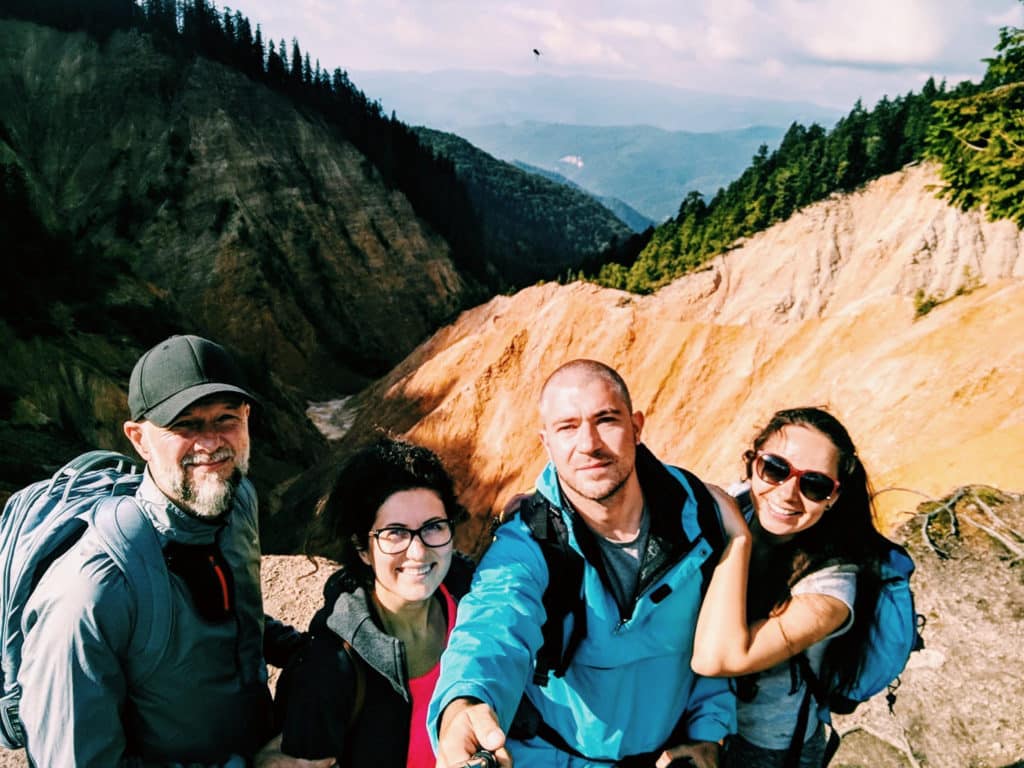
Recovery and Resilience
I can’t pinpoint exactly when I began to recover from histamine intolerance, as the process happened in stages. The journey was often confusing, with blurred lines between progress and setbacks, but I’m happy to say that most of my symptoms have resolved.
Now, when I push too hard, I feel it, but I know how to manage it. Simple practices like pausing and taking a deep breath can make a big difference. Beyond dietary changes, building resilience in my nervous system and focusing on “anti-fragility” became essential.
Tools That Contributed to My Healing
- Keeping a gratitude journal
- Yoga and meditation
- Meaningful relationships
- Reducing screen time and social media
- Spending time in nature
- Dancing, decluttering, and doing what I love
One book that helped me shift from a victim mindset to one of empowerment is Breaking the Habit of Being Yourself by Dr. Joe Dispenza.
Stay Positive, Help Your Body Recover
Recovery is different for everyone, but staying positive is key. Don’t let fear take over—listen to your body’s signals. It’s telling you something is out of balance and needs attention. With time and effort, you will discover amazing things about yourself through this journey.
Sharing My Story
When I first experienced histamine intolerance, I was desperate to find recovery stories. I didn’t come across many, which is why I waited 1.5 years to write about my own experience. Health is not a linear path, and no two journeys are the same, but I hope my story offers you some guidance and hope.
Recap: How to Clear Histamine from the Body
- Mindset: Histamine intolerance is not a life sentence. It’s a symptom of an imbalance, likely in the gut. Work with a functional medicine practitioner to restore that balance.
- Manage Stress: Stress is a major trigger. Find ways to lower it daily.
- Low-Histamine Eating: Eliminate high-histamine foods for a few weeks, but don’t obsess over lists. Focus on clean, healthy eating.
- Food Intolerances: Get tested for intolerances, but remember these often resolve once gut health is restored.
- Trauma: Address any underlying trauma, which may contribute to symptoms.
- Sleep: Prioritize better sleep; consider tools like The Tapping Solution.
- Supplements: Use supportive supplements during a histamine crisis (see earlier in the article).
- Gut Cleanse: Work with a doctor to treat gut dysbiosis and cleanse for parasites.
- Live, Love, Laugh: Engage in activities you love, spend time with loved ones, and enjoy nature.
Final Thoughts
If you have questions, feel free to ask in the comments, and I’ll do my best to help. While I am an Integrative Nutrition Health Coach, this is NOT medical advice. For personalized guidance, I recommend working with a functional medicine practitioner or discussing this topic with your doctor.
*This post contains some affiliated links, which means I get a small commission if you choose to purchase something via one of my links, at no extra cost to you.


138 Comments
Al
March 12, 2025 at 1:43 pmI also stumbled onto this article in my research about histamine intolerance, which is still all very new to me. I have been struggling with major digestive issues (and sooo many more symptoms that i didnt realize were in any way linked to my diet and intolerance until now) for quite some time but especially since a major allergic reaction to ingesting pollen. Since then everything has been worse and nothing has worked or made sense till now (I’ve also been eating all the biggest aggravators!). Anyways just wanted to say the work and effort you put into your website is truly inspiring and i am sooo so grateful!! Everything comes at a major cost these days, and being able to read about your insight and wisdom on a college budget is so insanely helpful. Anyway, just wanted to state my appreciation for sharing your journey and doing a lot of the hard work for us! Youre amazing!
Claudia
March 13, 2025 at 3:49 amHi Al,
Wow, your message truly made my day. Knowing that my work is helping you in such a meaningful way is the greatest reward, and I can’t tell you how much it means to me. The internet can feel overwhelming these days, but messages like yours remind me why I do this. I hope the good energy I felt reading your words comes back to you tenfold. Wishing you strength and healing on your journey—you’re not alone!
With love and gratitude,
Claudia
Ruthann H.
August 2, 2023 at 11:18 amClaudia, you have helped so many people with your insight, I can relate to EVERYTHING you wrote about! I’m having issues with asthma, allergies, excessive mucous production, & ALOT of gut issues, & it leads to much anxiety. Thank you sweet person for sharing your experience!
Claudia
August 2, 2023 at 12:25 pmHi Ruth! Thank you so much for your kind words. This is the beginning of your healing journey <3. -Claudia
Carla Moore
April 18, 2023 at 10:49 amThank you for your thoughtful and sensitive writing. I found you through Google in the middle of a scary night and it really helped me to focus and remain logical and gave me hope. Just identifying with so much of your experience and realizing that I might just survive the night with an action plan helped me more than you know. I have really been struggling with a whole laundry list of conditions and overlapping symptoms that make it impossible to know what goes with what. Autoimmune Hashimoto’s thyroid has turned my world upside down but has recently stabilized and I still have many issues to reconcile. I discovered accidentally that Vitamin C and later Benadryl gave me temporary reprieve which started my research on Histamine Intolerance to take to my doctor at my next appointment. I really identified with your notes on fragility. I have often asked myself “When did I get so fragile and sensitive to everything? Where is the strong, healthy, and confident woman that I used to be?” The health anxiety and seemingly random panic attacks are the absolute worst, it governs my every thought and action. I am working with a therapist on managing it and hope to “factory reset” my high alert button. I am just beginning to learn about my histamine intolerance, or overload. Hopefully it will logically explain some things that will satify my subconcious brain to really relax and allow it rebalance and heal. Thank you again, your article gives me a good starting place. Best Wishes to you in your journey!
Claudia
April 18, 2023 at 12:51 pmHi Carla, I’m so happy I could be a source of optimism in a moment like that. I know what it means to find something that gives hope. I don’t know you, but I know there is so much peace, strength, and health on the other side of this episode. Take it all in, go through it as it comes, and as you say, relax into it, and allow your body to find the balance. Much love and light, xx Claudia